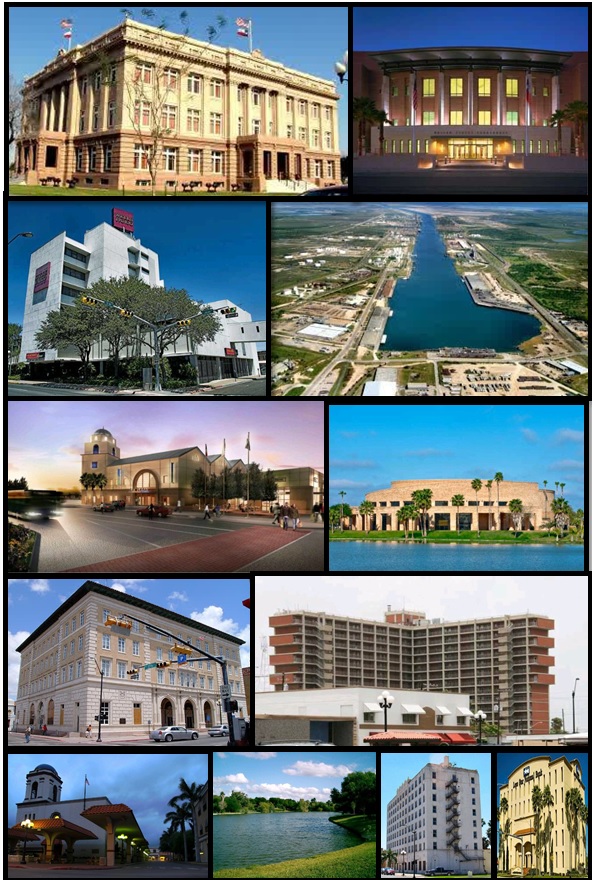Moving to Brownsville, Texas
About Brownsville, Texas

Brownsville () is a city in the U.S. state of Texas and the seat of Cameron County, located on the western Gulf Coast in South Texas, adjacent to the border with Matamoros, Tamaulipas, Mexico. The city covers 145.2 sq mi (376.066 km2), and had a population of 186,738 at the 2020 census. As of the 2020 U.S. Census, it is the 139th-largest city in the United States and 18th-largest in Texas. It is part of the Matamoros–Brownsville metropolitan area. The city is known for its year-round subtropical climate, deep-water seaport, and Hispanic culture.
The city was founded in 1848 by American entrepreneur Charles Stillman after he developed a successful river-boat company nearby. It was named for Fort Brown, itself named after Major Jacob Brown, who fought and died while serving as a U.S. Army soldier during the Mexican–American War (1846–1848). As a county seat, the city and county governments are major employers. Other primary employers fall within the service, trade, and manufacturing industries, including a growing aerospace and space transportation sector. It operates international trading through the Port of Brownsville. The city experienced a population increase in the early 1900s, when steel production flourished.
Due to significant historical events, the city has multiple houses and battle sites listed under the National Register of Historic Places. The city played a primary role in the Mexican–American War with the Siege of Fort Texas and the first engagements of the war: The Battle of Palo Alto and The Battle of Resaca de la Palma. Several key events of the American Civil War took place in the city, such as the Battle of Brownsville and the Battle of Palmito Ranch. The city was also involved in the Texas Revolution. Brownsville's idiosyncratic geographic location has made it a wildlife refuge center. Several state parks and historical sites are protected by the Texas Parks and Wildlife Department.
Brownsville has a predominantly Hispanic population, which at 93.9% is the third-highest proportion of Hispanic Americans of any city in the United States outside of Puerto Rico.
Gender
| Gender | Brownsville | Texas | Country |
|---|---|---|---|
| Female | 52% | 50.3% | 50.8% |
| Male | 48% | 49.7% | 49.2% |
Gender
Household Income
| Income | Brownsville | Texas | Country |
|---|---|---|---|
| Less than $10,000 | 12.2% | 6% | 5.8% |
| $10,000 to $14,999 | 7.5% | 3.9% | 4.1% |
| $15,000 to $24,999 | 13.4% | 8.4% | 8.5% |
| $25,000 to $34,999 | 11% | 8.9% | 8.6% |
| $35,000 to $49,999 | 13% | 12.3% | 12.0% |
| $50,000 to $74,999 | 18.2% | 17.6% | 17.2% |
| $75,000 to $99,999 | 10.2% | 12.5% | 12.8% |
| $100,000 to $149,999 | 9.9% | 15.6% | 15.6% |
| $150,000 to $199,999 | 2.7% | 7% | 7.1% |
| $200,000 or more | 1.8% | 7.8% | 8.3% |
Education
| Education | Brownsville | Texas | Country |
|---|---|---|---|
| < 9th Grade | 20% | 7% | 5.0% |
| 9-12th Grade | 15% | 8% | 7.0% |
| High School or GED | 24% | 25% | 27.0% |
| Other College | 16% | 22% | 20.0% |
| Associate's Degree | 6% | 7% | 9% |
| Bachelor's Degree | 14% | 20% | 20.0% |
| Master's Degree | 4% | 8% | 9.0% |
| Professional Degree | 1% | 2% | 2.0% |
| Doctorate Degree | 0% | 1% | 1.0% |
Household Income
Education
Race / Ethnicity
| Ethnicity | Brownsville | Texas | Country |
|---|---|---|---|
| White | 4.8% | 41.4% | 60.1% |
| African American | 0.2% | 11.8% | 12.2% |
| American Indian | 0% | 0.2% | 0.6% |
| Asian | 0.6% | 4.9% | 5.6% |
| Hawaiian | 0% | 0.1% | 0.2% |
| Other | 0% | 0.2% | 0.3% |
| Multiracial | 0.2% | 2% | 2.8% |
| Hispanic | 94.1% | 39.4% | 18.2% |
Race / Ethnicity
- ALABAMA
- ALASKA
- ARIZONA
- ARKANSAS
- CALIFORNIA
- COLORADO
- CONNECTICUT
- DELAWARE
- FLORIDA
- GEORGIA
- HAWAII
- IDAHO
- ILLINOIS
- INDIANA
- IOWA
- KANSAS
- KENTUCKY
- LOUISIANA
- MAINE
- MARYLAND
- MASSACHUSETTS
- MICHIGAN
- MINNESOTA
- MISSISSIPPI
- MISSOURI
- MONTANA
- NEBRASKA
- NEVADA
- NEW HAMPSHIRE
- NEW JERSEY
- NEW MEXICO
- NEW YORK
- NORTH CAROLINA
- NORTH DAKOTA
- OHIO
- OKLAHOMA
- OREGON
- PENNSYLVANIA
- RHODE ISLAND
- SOUTH CAROLINA
- SOUTH DAKOTA
- TENNESSEE
- TEXAS
- UTAH
- VERMONT
- VIRGINIA
- WASHINGTON
- WEST VIRGINIA
- WISCONSIN
- WYOMING
